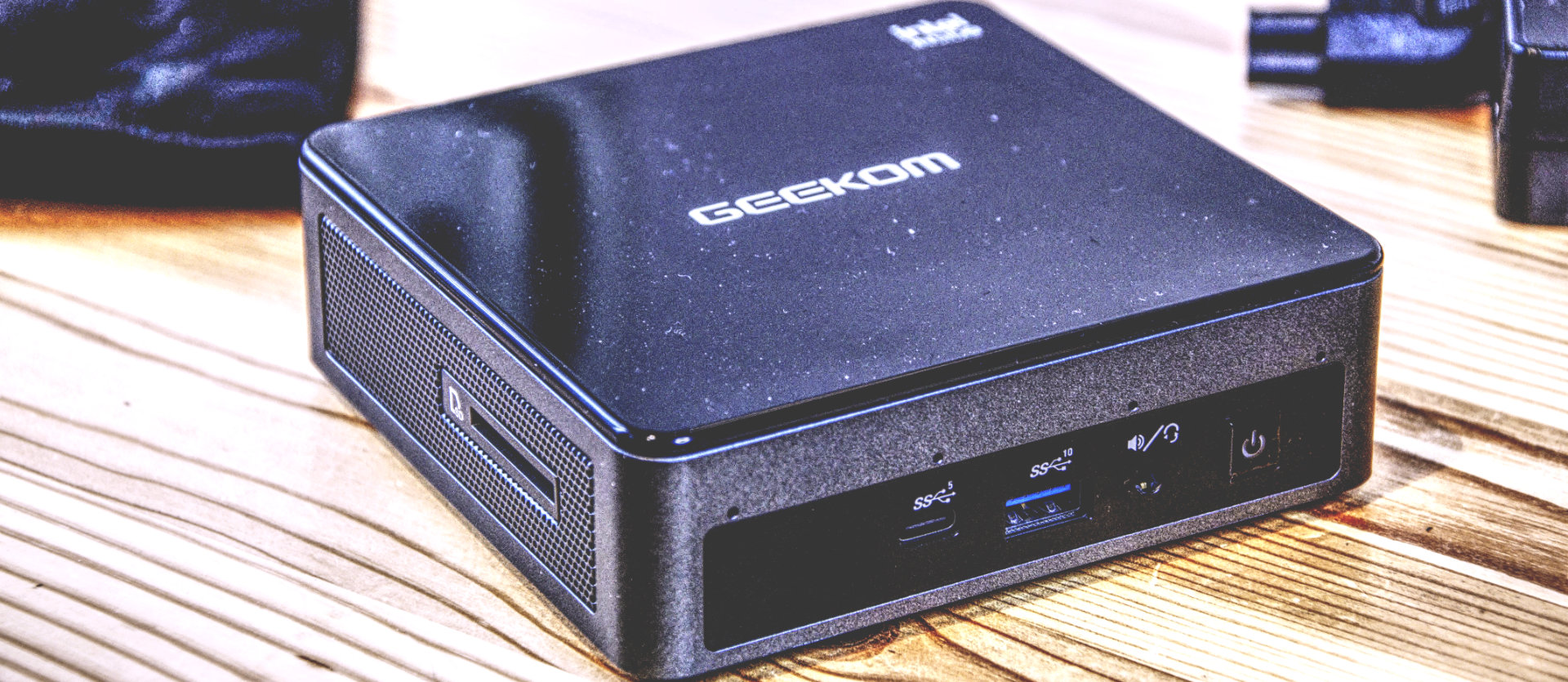Why you can trust TechRadar
In use
The best aspect of this design is the SSD because it enables Windows 11 Pro to launch quickly, and it also delivers applications with equal aplomb. With only 256GB available for Windows and applications, there isn’t a massive amount of space for user files. The number of USB ports allows extra local storage to be easily added, and the internal NVMe drive could be replaced with a larger drive for those willing to reinstall or use a USB caddy to clone the existing drive.
For surfing and running basic office applications, the MiniAir 11 has more than enough power, but this platform isn’t up to handling more demanding tasks like video editing.
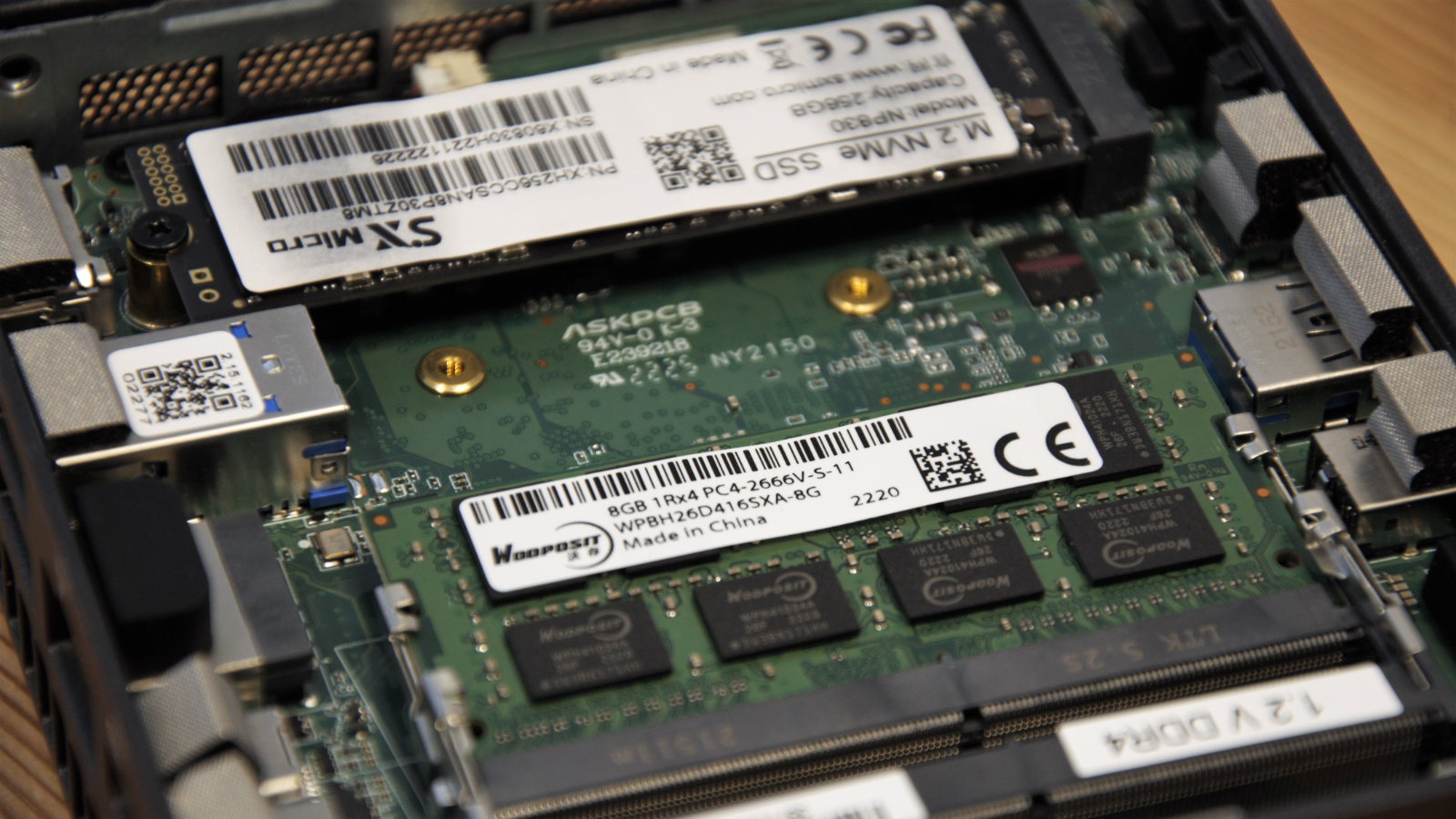
The GPU is the Achilles heel of this processor, and while you can expand both storage and memory, that’s a component you can’t easily upgrade.
With the HDMI, MiniDP and a 10Gbit USB-C port, it is theoretically possible to connect three 4K monitors to this machine. But given the limited video hardware, we wouldn’t recommend doing this.
Overall, the MiniAir 11 is an effective tool for those with modest objectives but not something that a person with an exceptionally tight deadline or intensive tasks would want to rely upon.
The Windows 11 Pro installation isn’t without a little bloatware, but at least GEEKOM didn’t put the resource-hungry Norton Security on it.
Performance
Here's how the GEEKOM MiniAir 11 scored in our suite of benchmark tests:
3DMark Wild Life: 1495; Fire Strike: 611; Time Spy: 206;
Cinebench R23 CPU pts: 617 (single-core); 2095 (multi-core)
GeekBench 5: 451 (single-core); 1404 (multi-core), 2074 (OpenCL)
CrystalDiskMark: Sequential Read: 1501.51MB/s; Sequential Write: 1129.22 MB/s
PCMark 10 (Office Test): 2356
Windows Experience Index: 5.2
Depending on which benchmark scores you look at, the MiniAir 11 can be classified as good, bad or downright ugly.
Undoubtedly the best result of these is the CrystalDiskMark 8.0.4 scores that reveal read performance three times that of a SATA drive and more than double the write throughput.
While these numbers aren’t great for an NVMe-connected drive, they represent predictable results when the M.2 PCIe slot only has two lanes connecting it to the processor.
As many Mini PC designs often only have SATA, even two PCIe lanes represent a significant step up in storage performance.
This NVMe capability helps elevate the PCMark 10 score to a level that’s more than respectable.
Where things are less wonderful are any tests that involve CPU processing. Given that on paper, the N5095 is so close to the N5105, their respective scores are markedly different.
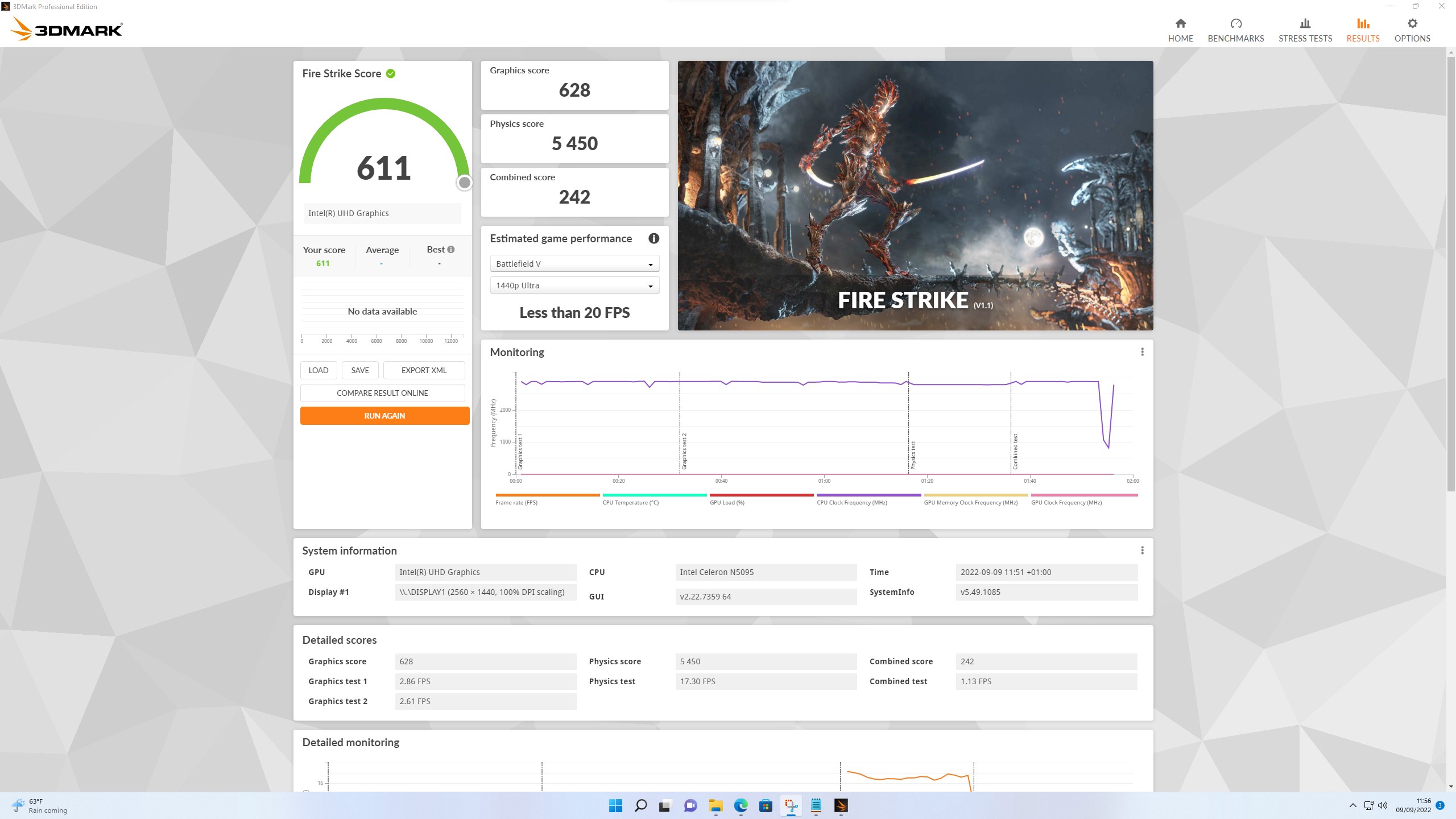
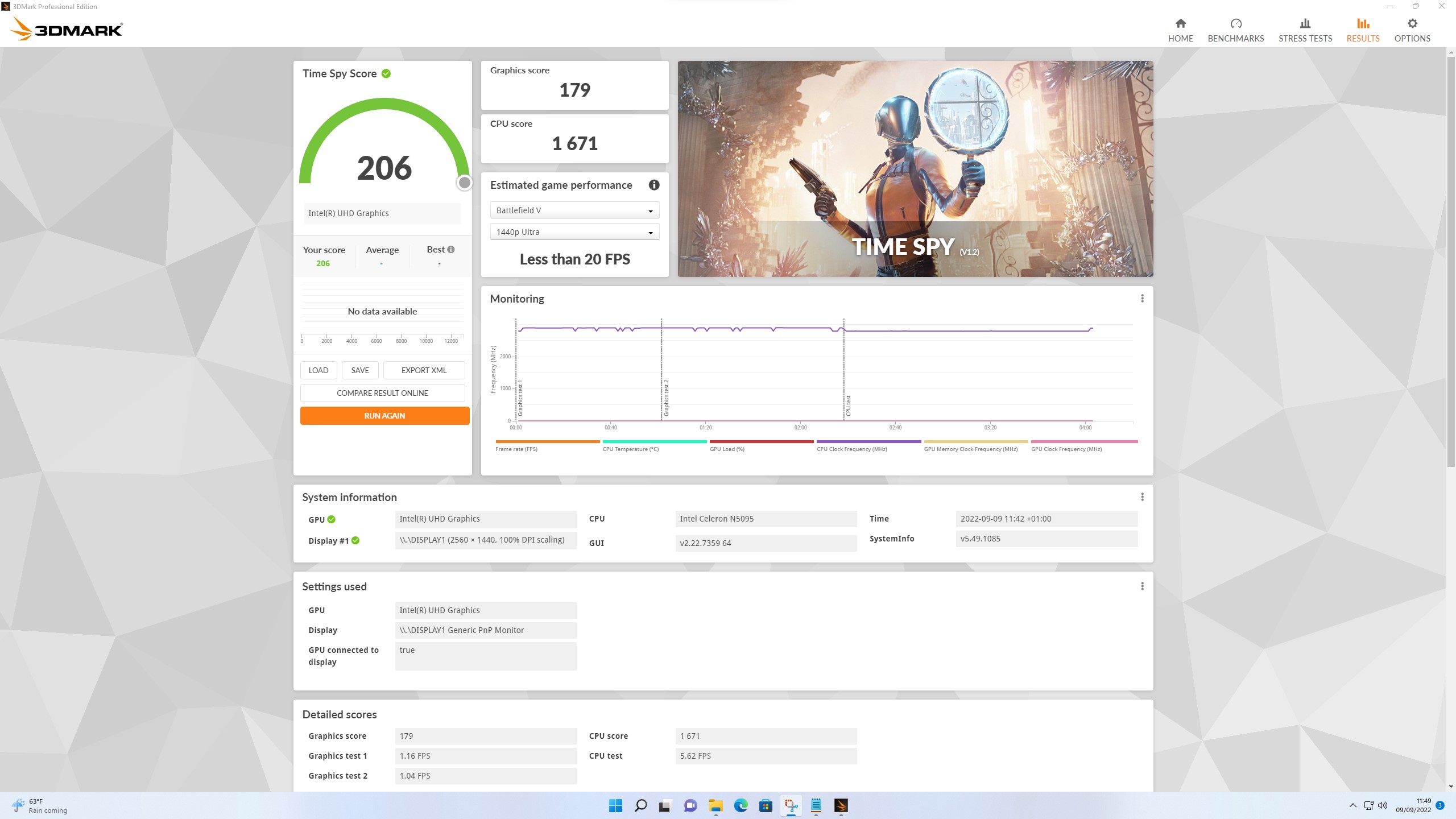
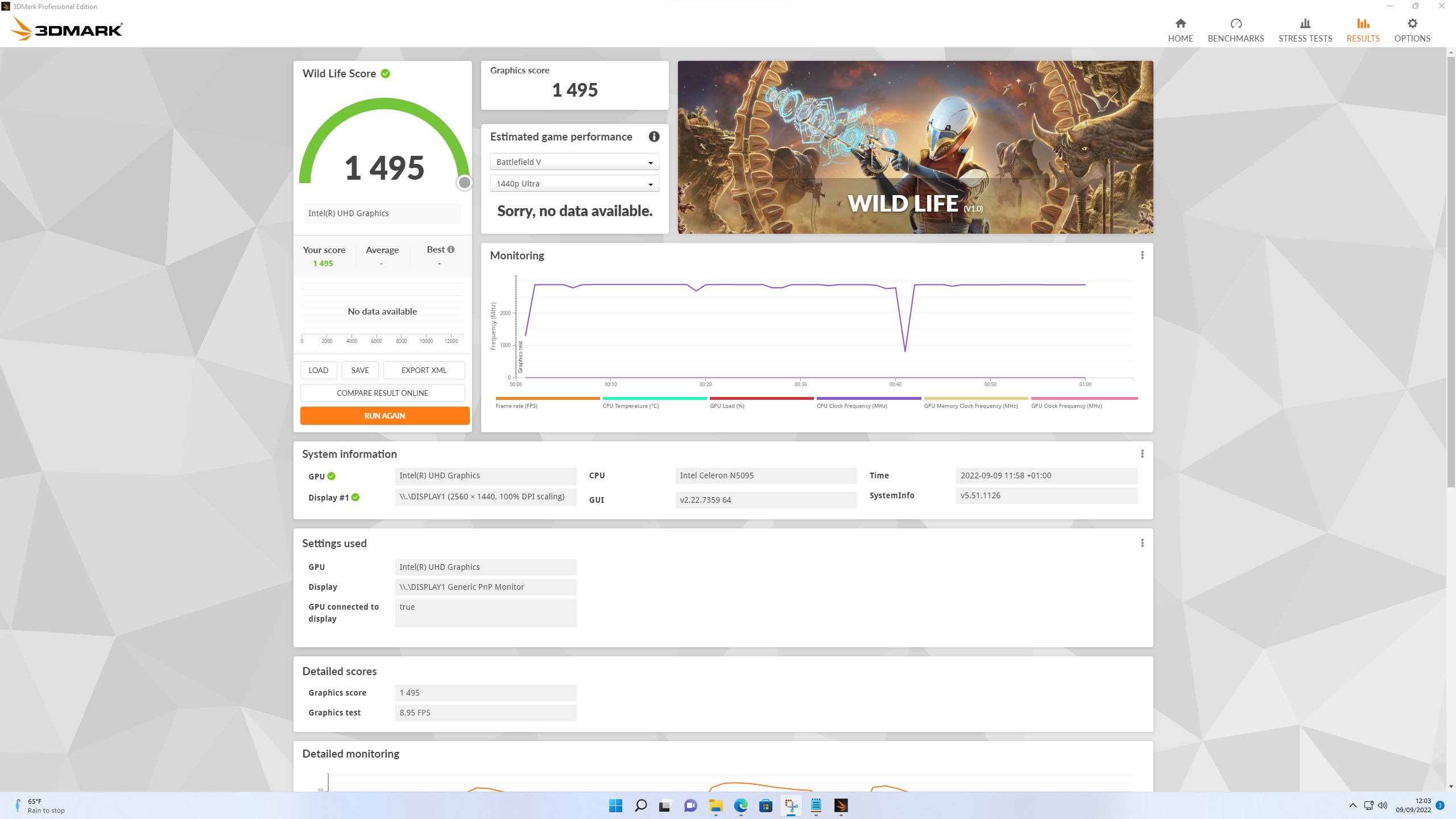
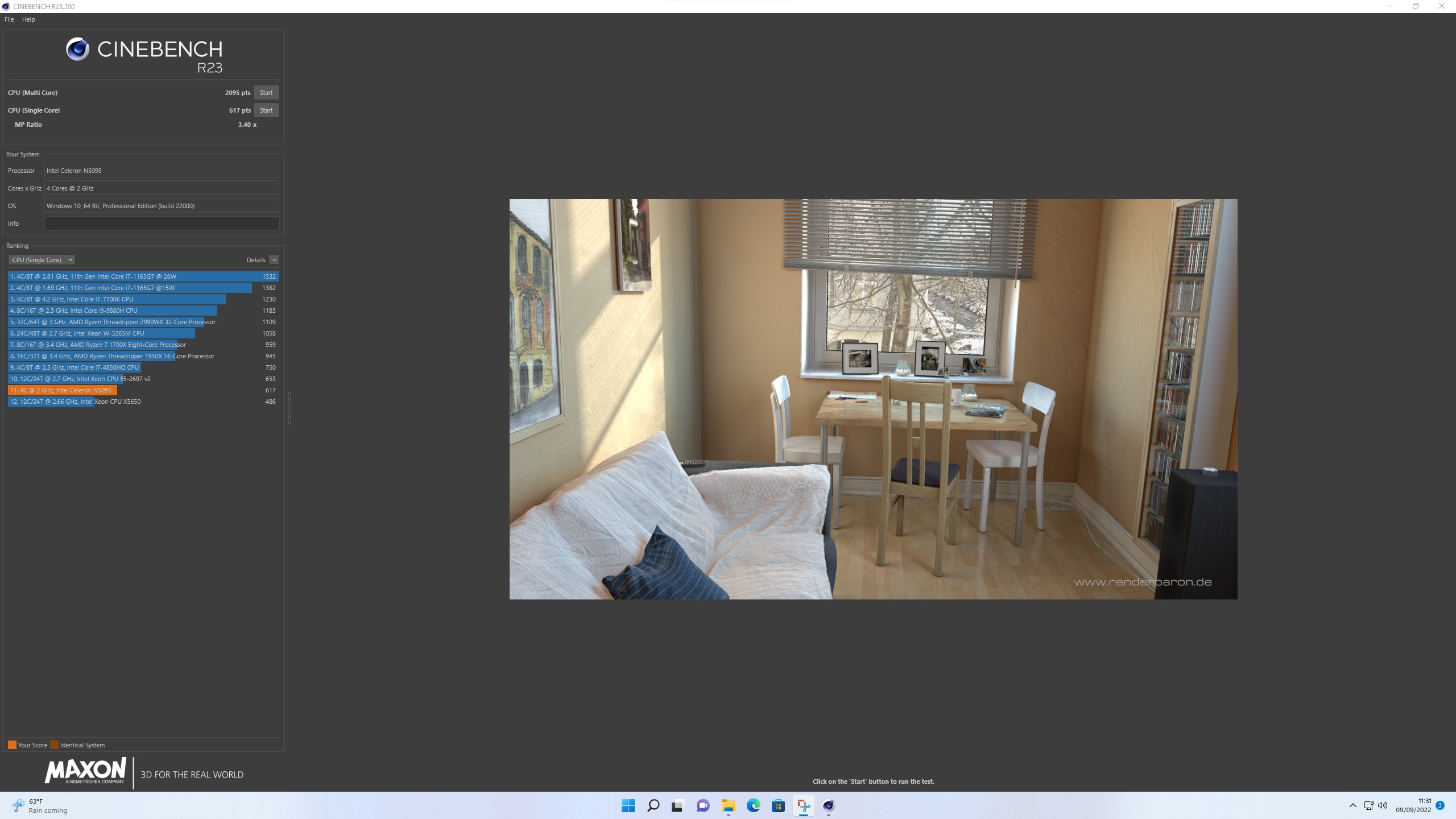
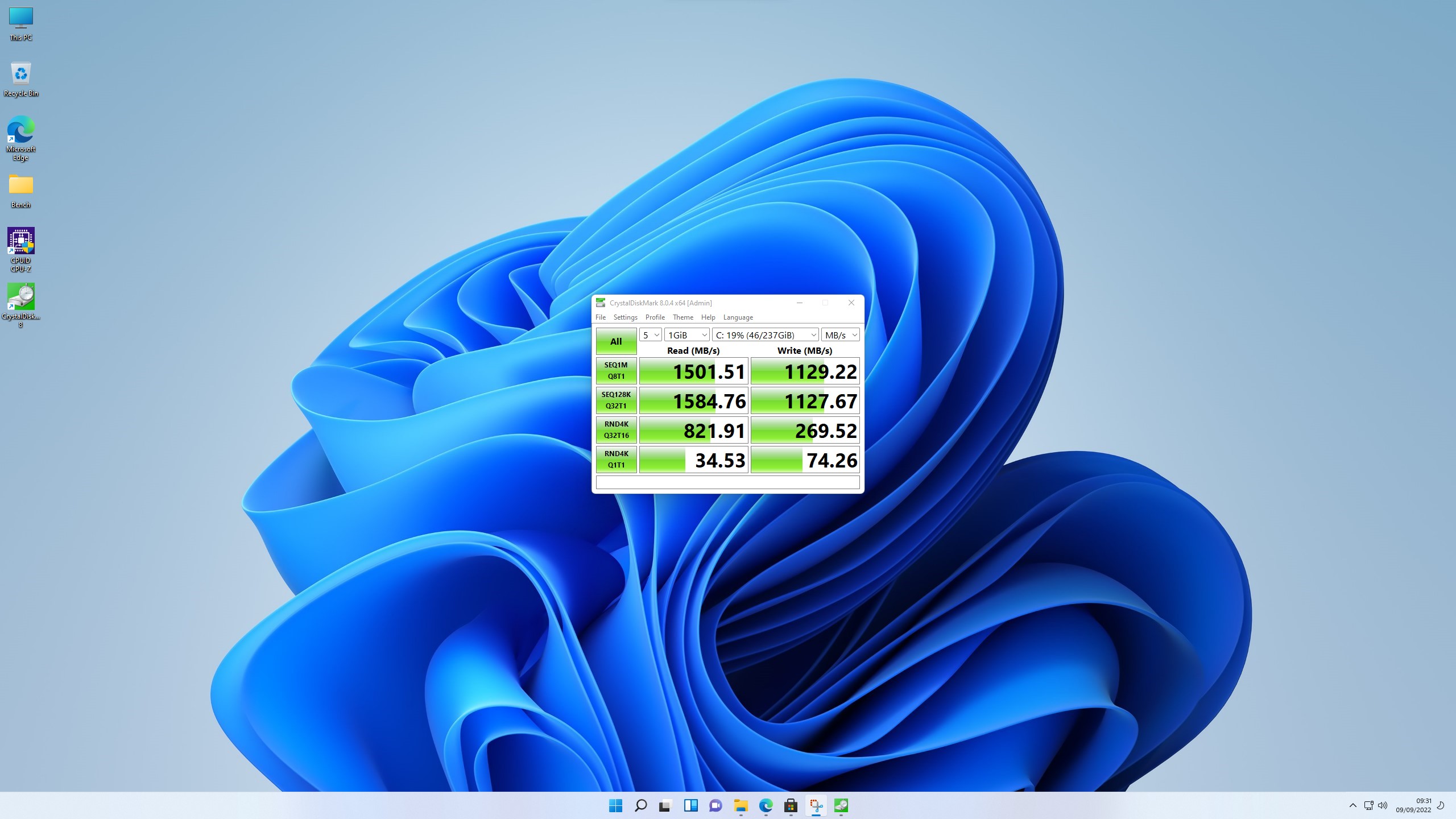
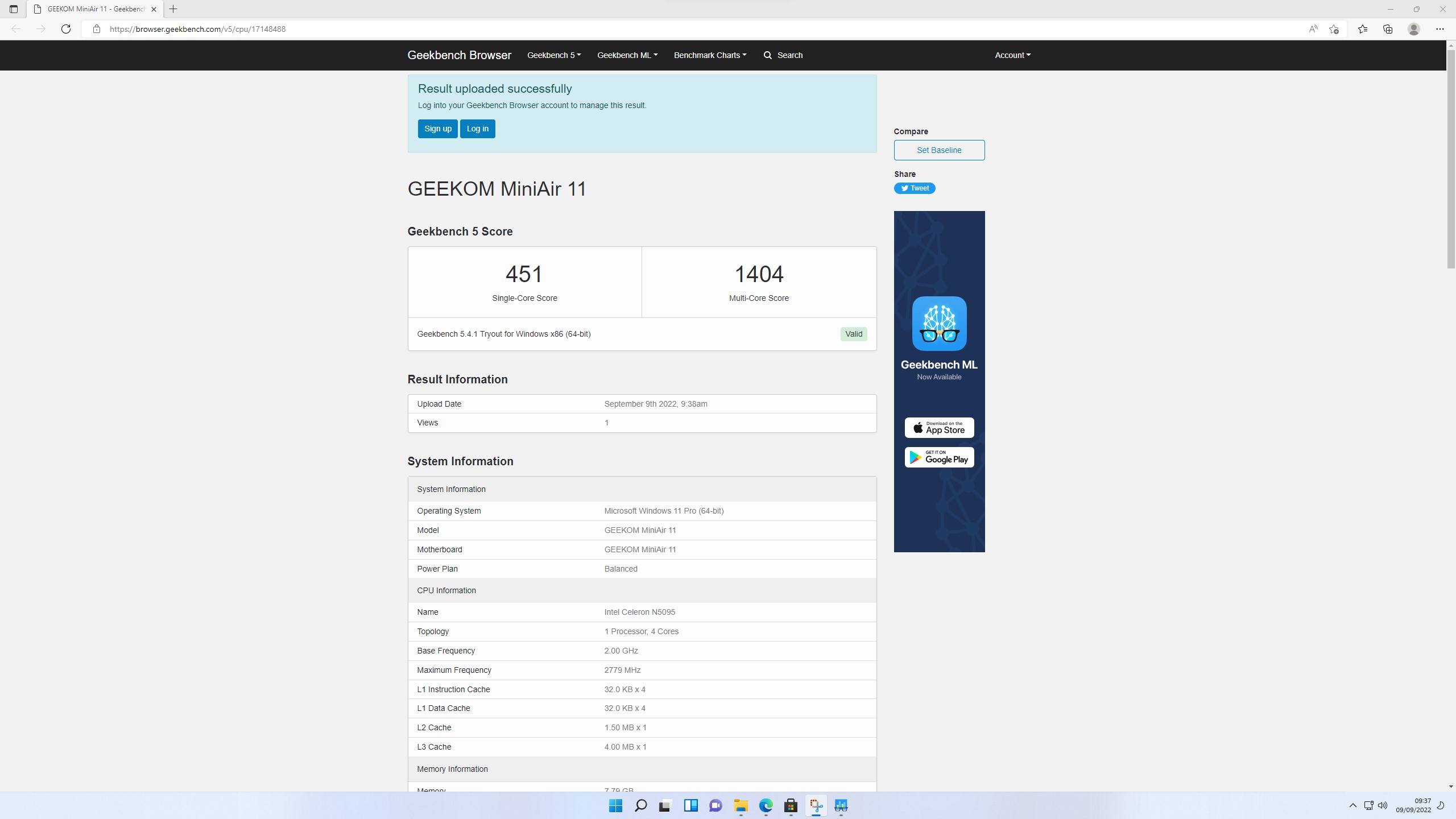
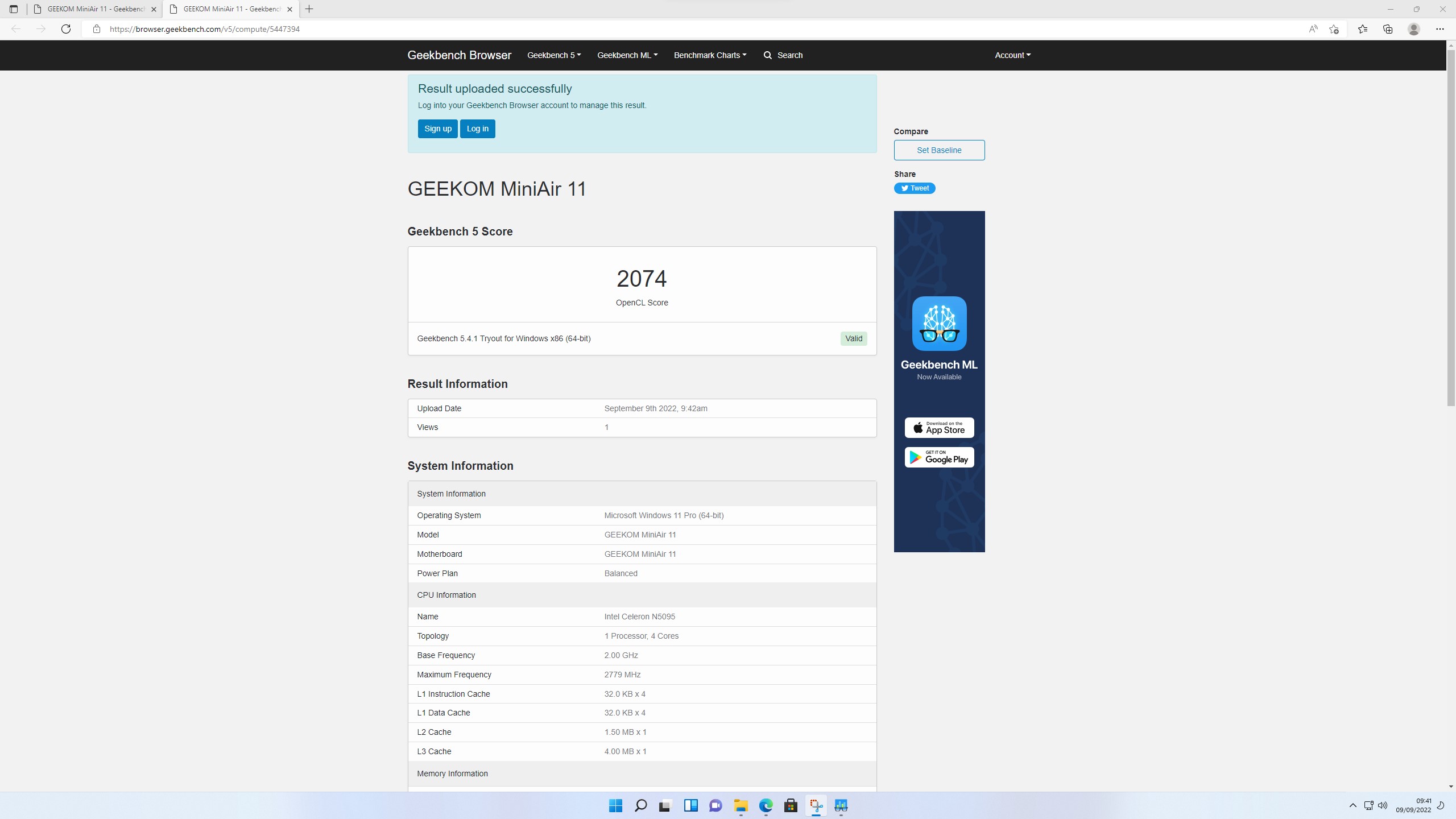
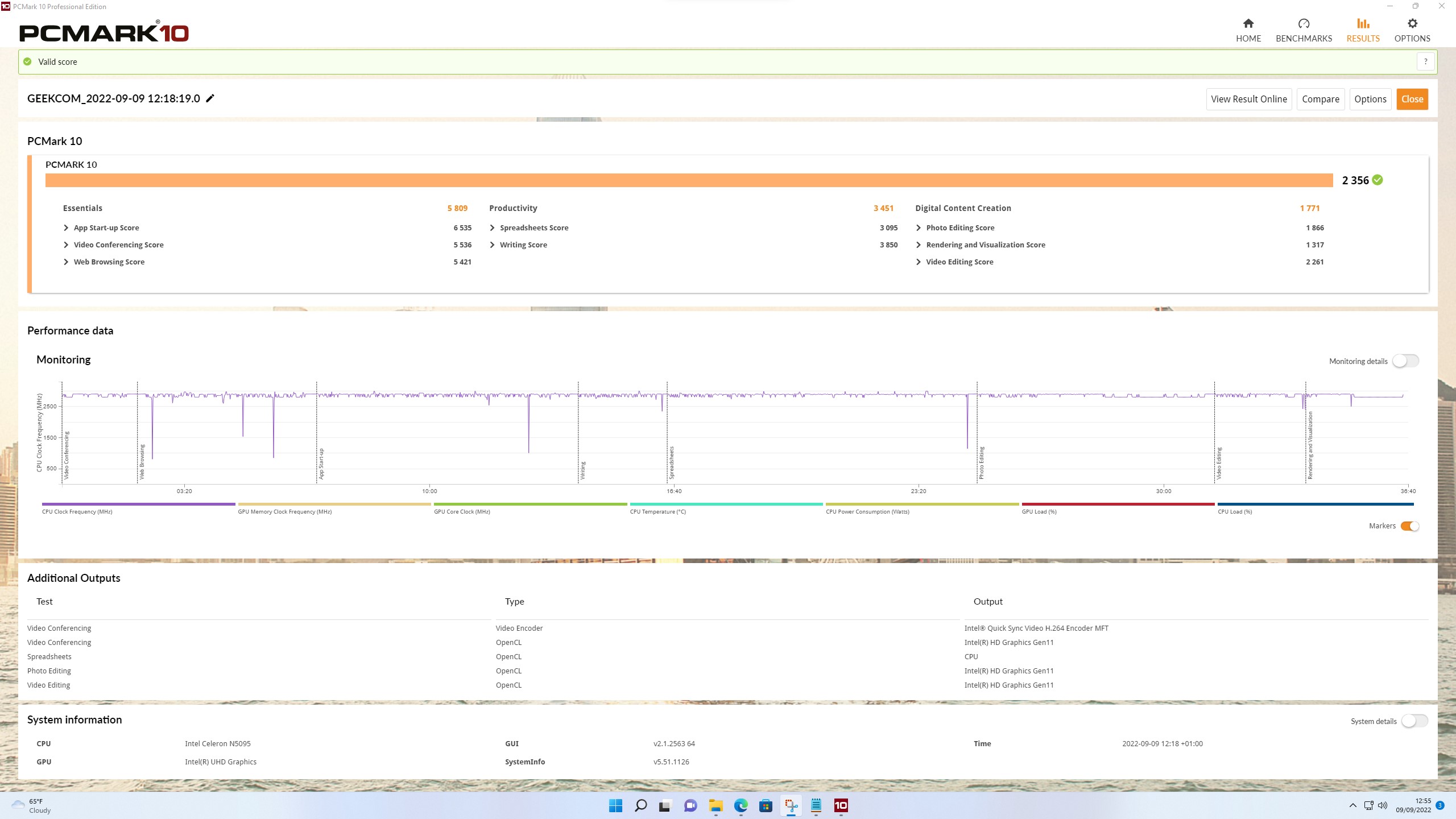
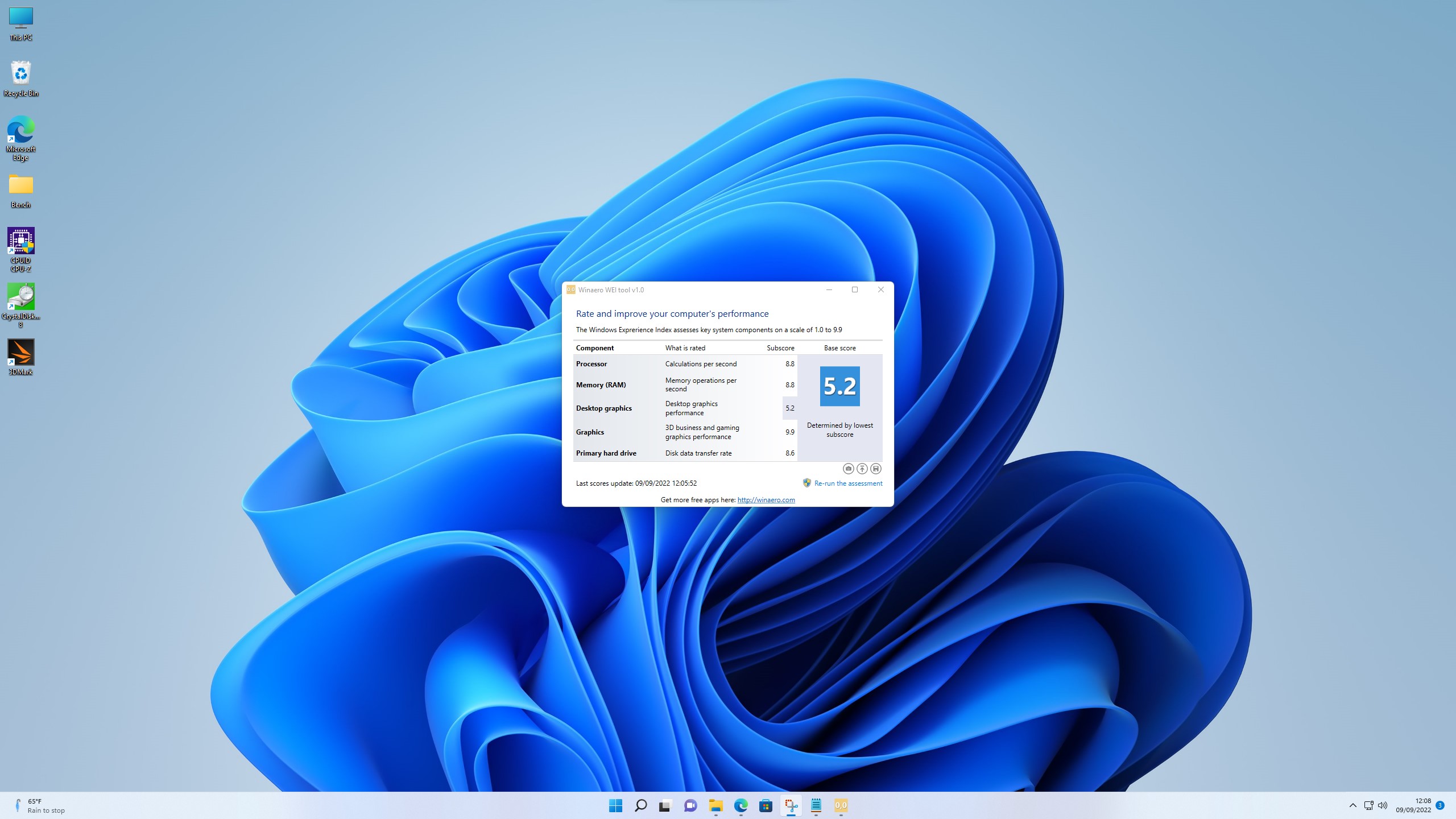
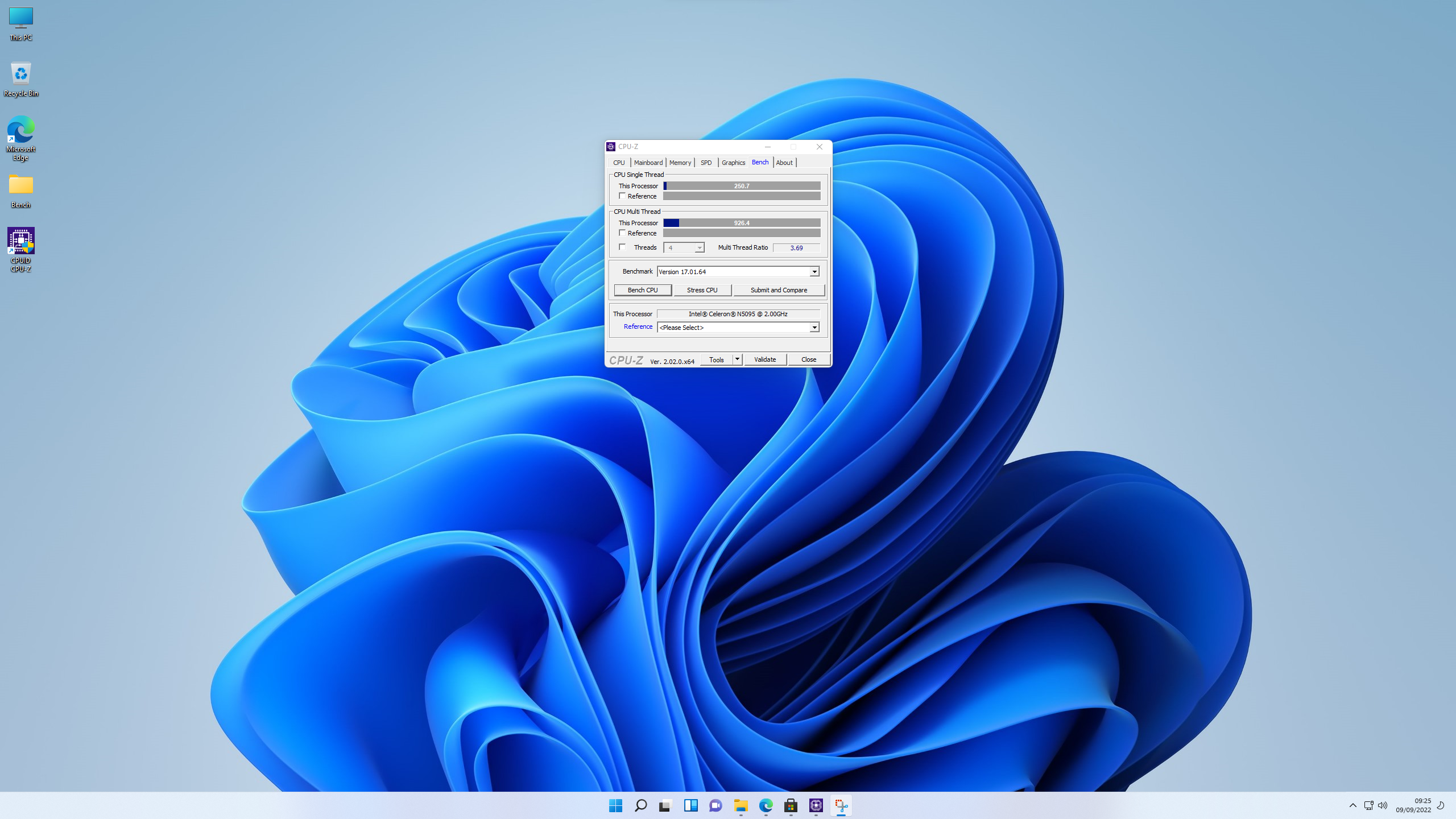
In GeekBench, the single-core test result is just 451, whereas the N5105 in the Beelink U59 managed 620, or 37% faster. Multi-core results are 45% speedier, and OpenCL is 78% quicker on the N5105 with the same number of cores.
Equally dire results are those that rely to a greater degree on the GPU, as in the 3DMark tests, where typically, the UHD Graphics on the N5095 are between 50-60% of the scores of the better UHD Graphics on the N5105.
Even 3DMark Wild Life, a test primarily designed for phones and laptops, is reduced to being a slideshow on this hardware.
In conclusion, if you are looking for a small system with some grunt, the MiniAir 11 isn’t it.
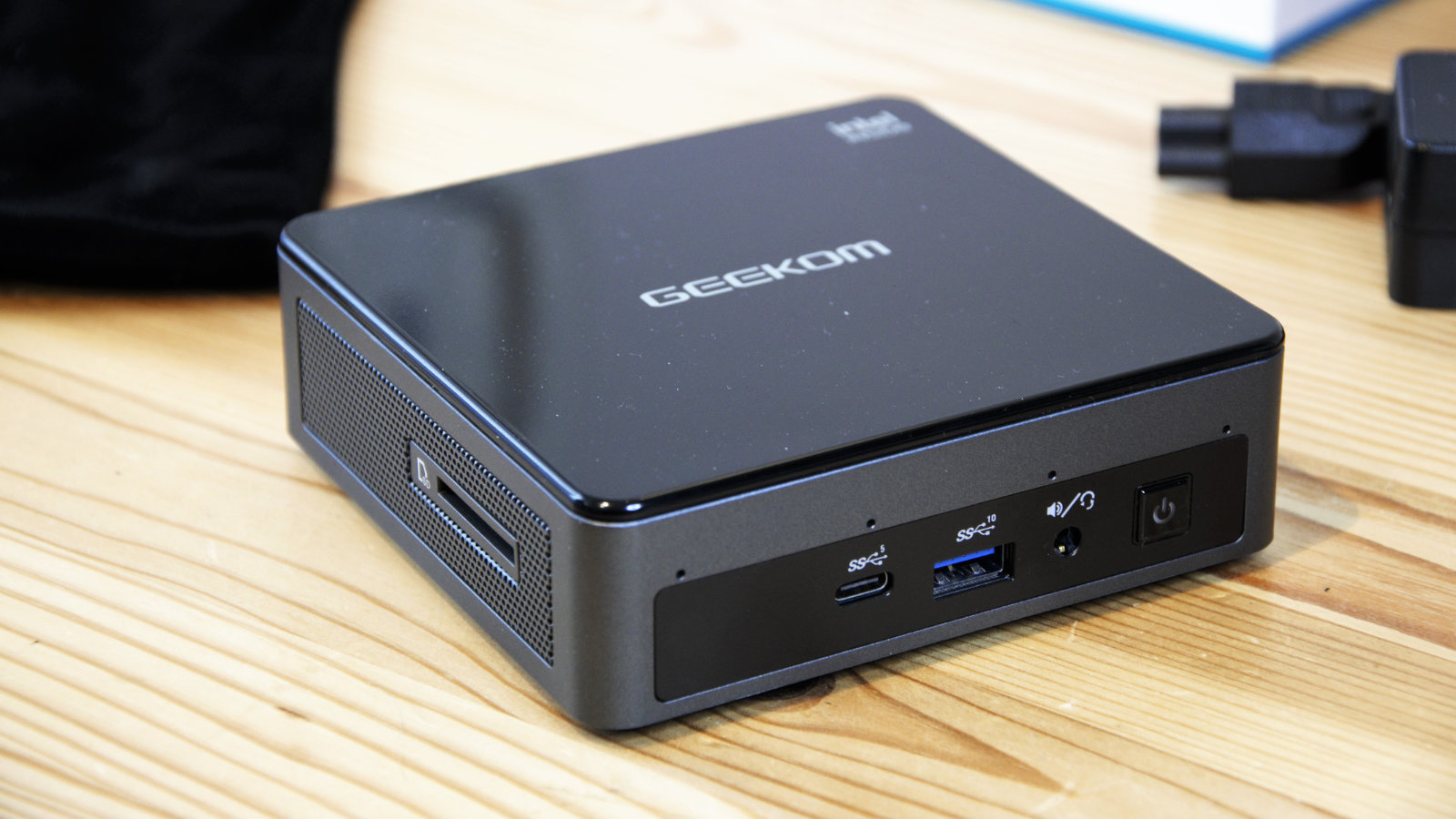
Final verdict
There is a delicate balance to be struck when designing a NUC, and the GEEKDOM MiniAir 11 never quite manages to achieve optimal equilibrium.
Where it's acceptable for general office use, the N5095 processor is on the tepid side and lacks performance for more challenging jobs. The GPU is at the low end of the limp performance that Intel UHD doles out, making it unsuitable for those exercises involving moving graphics.
For greater clarity, the MiniAir 11 needs to be compared with other NUC devices, like the Beelink U59 we recently reviewed.
That machine used a better processor that included integrated WiFi 6, and to deliver the number of 5Gbit USB ports onboard, it traded the M.2 slot down to SATA-only operations and dual gigabit LAN ports.
Conversely, the MiniAir 11 went with an M.2 NVMe slot, allowing for faster storage, and used the spare lane capacity for better 10Gbit USB ports and the WiFi 5 network module.
If quicker storage is important for you, then GEEKOM made the right choice, and if CPU/GPU performance is critical, then a different NUC might be more suitable.
The GEEKOM MiniAir 11 is probably better suited to someone doing general office chores, whereas the Beelink U59 has a broader selection of uses that might include embedded roles, like a firewall or presentation system.
For the relatively low asking price, the GEEKOM MiniAir 11 is a useful piece of PC hardware. Just don’t expect gaming or interactive graphics from it.
- 1
- 2
Current page: In use, performance and verdict
Prev Page Introduction, price, design and hardwareMark is an expert on 3D printers, drones and phones. He also covers storage, including SSDs, NAS drives and portable hard drives. He started writing in 1986 and has contributed to MicroMart, PC Format, 3D World, among others.
